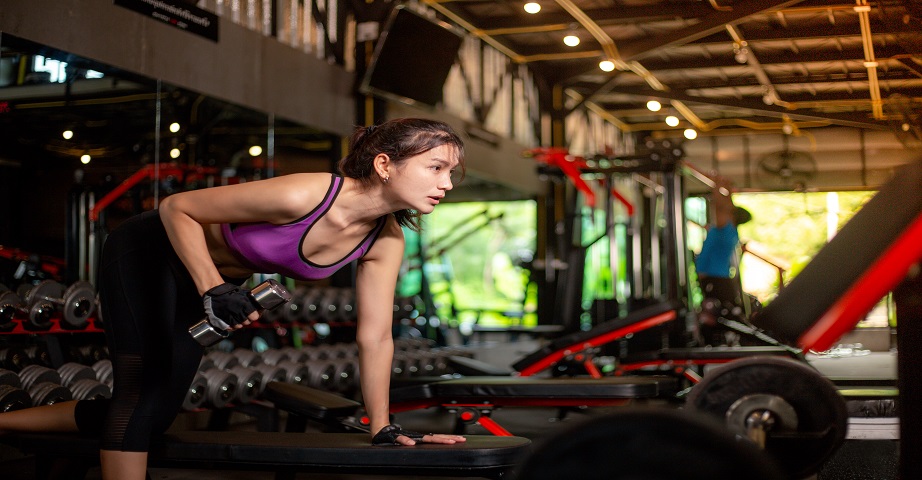Push pull legs training - principles, effectiveness, training plans

Push pull legs training is a variation of split training that combines exercises into different muscle groups. It is a thoughtful division of activity, taking into account the nature of the movement performed, which greatly affects the development of strength and size of muscles. What does a push pull legs system look like and who should consider using it? How to create a push pull legs training plan?
Summary
- Push pull legs training - what is it?
- Push pull legs training - for who?
- The effectiveness of push pull legs training - advantages and disadvantages of PPL
- Push pull legs or split training?
- Push pull legs training for 3 days - training plan
- Push pull legs training - 4-day training plan
- Push pull legs traning for 5 days - training plan
Push pull legs training - what is it? Basic principles and assumptions
A push pull legs training is a type of split training, which consists in dividing the whole body into three parts, and the activity performed into three training units, taking into account the nature of the movement performed.
One day, a push training should be carried out, that is, all exercises that involve performing the push or squeeze movement. According to the assumptions of PPL training, on the second day, a pull exercises are recommended, consisting in attracting, while on the third day you should do a leg training, that exercises focusing on the legs - thigh and calf muscles.
Thus, the push day promotes the formation of the chest, shoulder muscles and triceps, and the pull day is based on the training of the back, the two-headed muscles of the arms and the biceps. Legs day, on the other hand, is exercises for the legs and buttocks.
The most important principle of the push pull legs training is to perform physical exercise three days in a row, taking into account the nature of the movement performed, and then allocate one or two days to rest the body.
Thanks to the use of split training, on the day when we exercise some muscle parts, others - rest, and this prevents the need to take longer breaks between workouts, and what's more, it promotes proper muscle regeneration and provides them with the right stimulus to act.
Push pull legs training - for who?
The push pull legs training is a flexible training system that will be a good solution both when building strength, shaping muscle mass, and when the goal is to reduce body fat.
It is a method that can be used both by beginners lovers of an active lifestyle, and by intermediate athletes or professionals. This is due to the fact that the PPL training can be modified in many ways, changing the range of repetitions, pace or break time between sets, and adapting it to the individual capabilities of the exerciser.
Not without significance is also the amount of physical efforts made during the week - athletes and professional players can easily do training 5-6 times a week, without any problems, thus, exercising a little more often than during classic physical exercise and taking into account activities for each muscle part.
The effectiveness of push pull legs training - advantages and disadvantages of PPL
The push pull legs training is a kind of combination of classic split training with the general development effort FBW. The division of activities performed due to the type of movement in the PPL system allows training more often without overloading the muscles, and what's more, allows focusing on the correct technique. It is also a type of physical exercise that promotes the growth of muscle mass and increases strength and overall physical condition, and what's more, facilitates the burning of additional calories and saves time.
What are the disadvantages of the push pull legs training? Incompetently planned the PPL may contribute to overtraining and muscle overload. In addition, the poorly composed push pull legs system for a beginner can effectively discourage this type of activity. However, if the training is well suited to the individual needs of the athlete, there is nothing to fear, because the number of possible benefits definitely exceeds the possible shortcomings of the PPL method.
Recommended products
Push pull legs or split training?
The push pull legs training can contribute to better results than the classic split, due to the higher frequency of training and more effective regeneration of individual muscle groups. In split training, one muscle part is usually performed once a week, and the recovery time is 24-48 hours. However, in the PPL system, one of the muscle groups can be trained twice a week, which makes a huge difference in the case of shaping muscle mass and increasing strength.
In addition, in the push pull legs training, due to the performance of one day of exercises focused around the same nature of movement, the body warms up faster and adapts, which results in better adaptation of the whole body. The PPL can also cause a greater hormonal ejection than the classic split.

How to create a push pull legs training plan?
The push pull legs training, as we mentioned earlier, should be individually tailored to the needs and capabilities of the exerciser.
When creating the PPL training plan, remember to start physical activity with a warm-up that will raise body temperature, warm up the body and reduce the risk of injuries and insults. It is also worth remembering to start each training session with the most complex exercise for large muscle parts (chest, back), and then gradually move to activities related to smaller muscle parts (biceps, calves) and auxiliary exercises. When designed the training plan, should focus on both multi-joint exercises and isolated exercises.
When developing an appropriate training plan, you should also apply the optimal load and take into account the energy supply - the athlete should have the strength to perform a minimum of 1-2 repetitions during each training series, and all the effort should not last more than 40 minutes.
Due to the split nature of push pull legs exercises, the training can be performed up to 5-6 times a week, making each muscle batch can be exercised up to twice in one week, which can have a positive effect on the pace of achieving the desired effects.
Push pull legs training for 3 days - training plan
What does a three-day, exemplary push pull legs training plan look like? Every day you should focus on a specific type of complex exercises - the first day on push activities, the second - pull exercises, and the third - leg exercises.
Before starting the exercise, you should do the right warm-up, and after the training - the stretching.
Day I - PUSH
On the first day during the push training, exercises should take into account the muscles of the chest, shoulders (front and side actons), triceps. It is worth doing activities such as.:
- barbell bench press - 3 series of 8 repetitions,
- incline dumbells bench press - 3 series of 10 repetitions,
- dumbbells chest fly - 3 series of 8 repetitions,
- overhead dumbbell press - 3 series of 10 repetitions,
- military press - 4 series of 5 repetitions,
- dips - 3 series of 8 repetitions,
- bench dips - 3 series of 10 repetitions.
Day II - PULL
On the second day, during the pull training, you should perform exercises focused around the back, shoulders (back actons of the shoulder muscles), biceps. It is worth to carry out activities such as:
- deadlift - 4 series of 6 repetitions,
- hanging knee raise on the bar - 4 series of 8 repetitions,
- bent over barbell row - 4 series of 6 repetitions,
- EZ bar biceps curls - 4 series of 10 repetitions,
- bent-over raise - 4 series of 8 repetitions,
- hammer curl - 4 series of 8 repetitions.
Day III - LEGS
On the third day during the leg training, you should focus on leg exercises, taking into account the muscles of the thighs and calves. It is worth doing exercises such as:
- squat with weight bar - 3 series of 6 repetitions,
- Bulgarian squat - 3 series of 8 repetitions,
- Romanian deadlift - 3 series of 8 repetitions,
- leg calf raise while standing- 4 series of 10 repetitions,
- leg calf raise while sitting - 4 series of 10 repetitions,
- walking lunges with load - 3 series of 8 repetitions.
Push pull legs training - 4-day training plan
An exemplary, four-day push pull legs training plan is physical exercise that also includes a day of rest, or regeneration. Then the activity should be as follows:
- day I - the push exercises,
- day II - the pull training
- day III - the legs exercises,
- day IV - the day of rest.
Push pull legs traning for 5 days - training plan
When creating a PPL training plan, you should take into account the capabilities of the exerciser. With the increase in experience, it is worth moving on to more advanced physical exertion. It is also worth taking into account the higher load. The training plan for 5 days may look as follows:
- Day I - the push training and exercises such as:
- dumbbell bench press,
- dumbbells chest fly,
- press-ups,
- dips,
- shoulders abduction on the side,
- dumbbell lateral raise,
- horizontal bench press close grip.
- Day II - the pull training and exercises such as:
- hanging knee raise on the bar,
- bent over dumbbell row,
- deadlift,
- bent-over raise,
- barbell-pull.
- Day III - the leg training and exercises such as:
- lower leg extension on the machine while sitting,
- walking lunges with dumbbells,
- squats,
- barbell leg calf raise while standing,
- leg calf raise while sitting.
- Day IV - break day - regeneration,
- Day V - the push training and exercises such as the first day.

